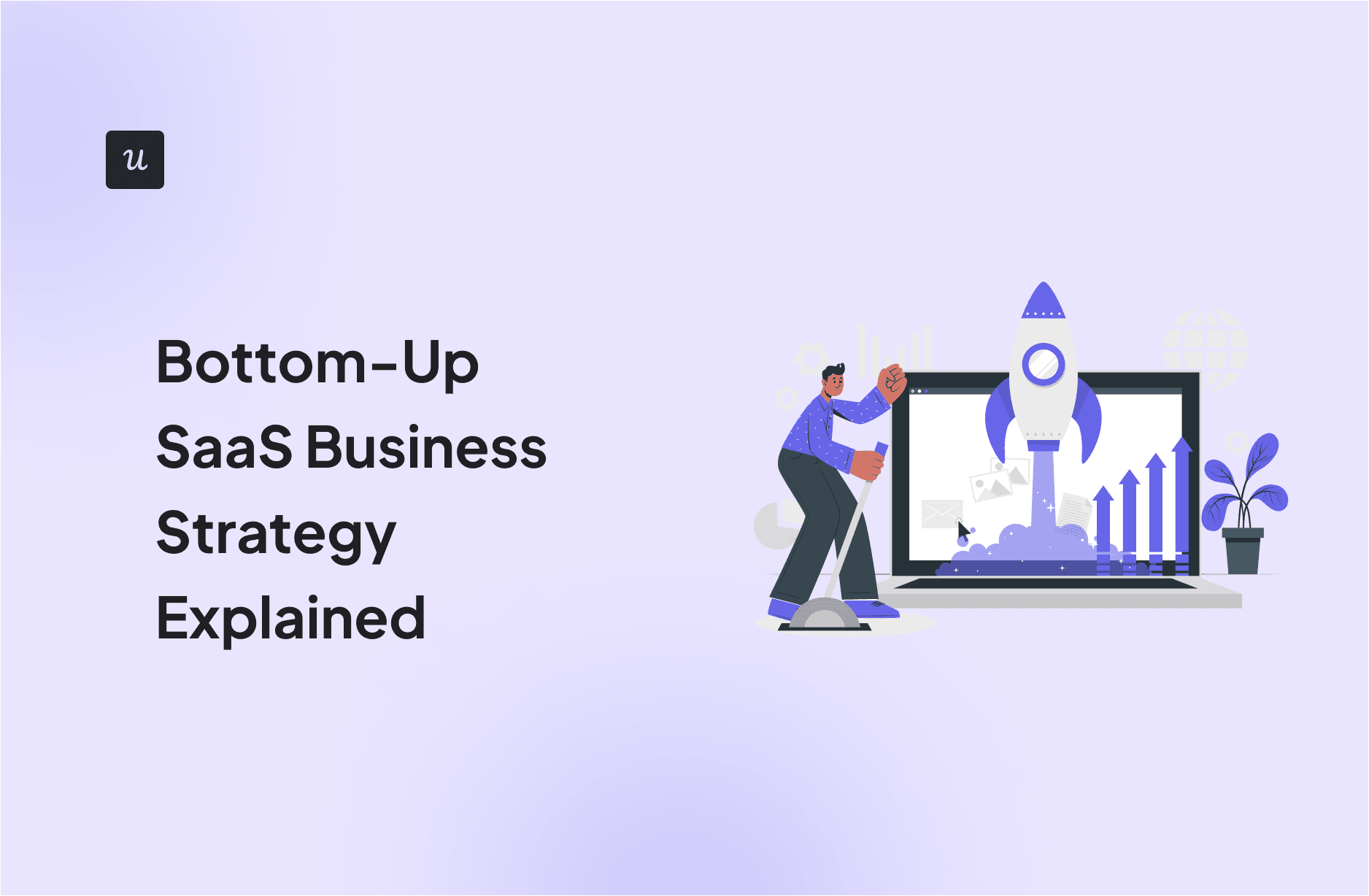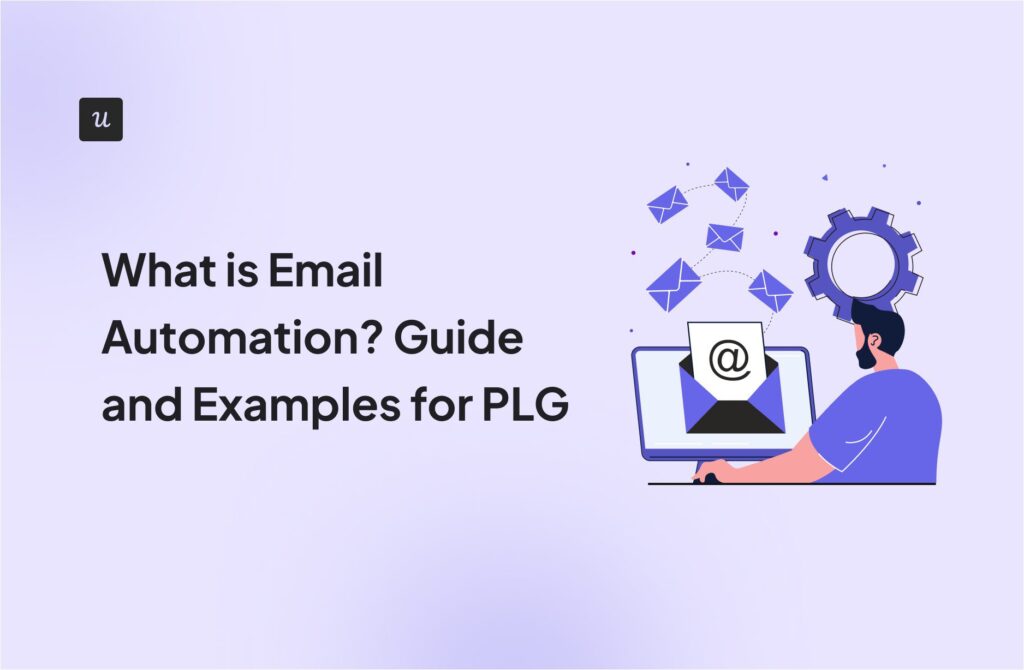
Think about the last software application that you used for work. Whose idea was it to buy it? Did it come from the management or employees? If it’s the latter, then you’ve already experienced what bottom-up SaaS is!
Our guide explains what exactly bottom-up SaaS is and covers the main growth strategies and tactics used by bottom-up companies.
Let’s dive right in!
Try Userpilot Now
See Why 1,000+ Teams Choose Userpilot

Overview of bottom-up SaaS
- In the bottom-up model, a SaaS company promotes the product to individual end-users and teams. Once they adopt the product, they champion it within the organization.
- Product-led growth is a well-known bottom-up approach that relies on the product for customer acquisition and revenue expansion.
- Free trials and freemium enable the users to explore the product and experience its value to convert them into paying customers. For this approach to work, a trial or free plan mustn’t satisfy user needs entirely.
- The self-service model enables users to buy (or cancel) the subscription, implement the product, learn how to use it, and access support without talking to customer services teams. This approach is becoming increasingly popular, even for the enterprise client.
- Word-of-mouth marketing relies on product virality and network effects. To encourage satisfied users to promote the product in their social and professional networks, companies use referral and loyalty schemes.
- Account expansion through upsells and cross-sells increases customer lifetime value without elevating CAC. This is best done through contextual in-app messages highlighting the benefits of the additional/premium features.
- Want to find out how Userpilot can help you leverage the bottom-up SaaS model? Book the demo!
What is bottom-up SaaS?
Bottom-up SaaS is a growth strategy used by B2B SaaS companies that focuses on individual users or teams to drive customer acquisition.
In a nutshell, by enabling end-users to experience the product value, the bottom-up SaaS model turns them into product advocates who promote it from within the organization. This means product adoption starts with small teams and gradually spreads across the entire company.
How is it different from the top-down business model?
The latter is less user-centric and relies on the sales team targeting the key decision-makers and nurturing them with sales pitches, presentations, and demos, to secure an enterprise deal for the whole organization.
Different approaches used in bottom-up SaaS companies
How does the bottom-up business model work in practice? Let’s have a look at a few common approaches to implement it.
Product-led growth
Product-led growth is a business model and go-to-market strategy that uses the product as the main driver of customer acquisition, revenue, and account expansion.
Instead of taking money from customers upfront, PLG enables users to experience value. Only when they’re satisfied with how the product satisfies their needs and desires, may users upgrade to a paid plan. In the long run, they might also play a role in new customer acquisition.
This reduces the role of the marketing and sales teams (but doesn’t eliminate them).

Product-led growth playbook
Here’s how to implement PLG:
- Offer a free plan or trial. This ensures a constant flow of new customers and allows them to experience the value.
- Create a frictionless sign-up flow to smoothly let users inside the product.
- Provide onboarding experiences personalized to unique user needs to reduce time-to-value.
- Use contextual in-app messages to introduce new features.
- Gather customer insights on how to improve the customer experience via surveys, interviews, and reviews.
- Leverage product analytics to enable data-driven decision-making.
- Ensure on-demand access to support to both free and paying users.
- Cultivate an organizational culture that fosters customer-centricity, innovation, and cross-functional collaboration.

Freemium or free trial
Freemium and free trial are the main two bottom-up customer acquisition models.
In freemium, the user gets access to limited functionality for free. There’s no restriction on how long they can use the product, but there might be a usage cap, like limited storage or data.
In the free trial, the user gets access to full functionality but for a limited time.
In both instances, the users get a chance to experience value but cannot use it to achieve all their goals because of the limits.
Free trial playbook for improving conversions
The measure of freemium or free trial success is how well they convert users into paying customers.
Here are a few tactics to boost conversions:
- Analyze user behavior to discover the most valuable features and the time to activation.
- Based on the insights, determine the ideal length of the free trial period. Make it only long enough to activate.
- In your free plan, restrict access to the most valuable features to incentivize free users to upgrade.
- Use a reverse free trial to allow users to discover the value of the premium features.
- Drive upgrades with contextual in-app messages, such as when the user is about to use a premium feature or is near the end of the trial.
- Create a sense of urgency and FOMO for users on free trials.

Self-service
The self-service model reduces the dependence of the SaaS company on the customer service teams.
That’s because users can onboard, use, manage, and troubleshoot a product without their direct assistance. This reduces customer support costs considerably and gives users independence.
Self-service isn’t only about the support but also sales: most users purchase the product or renew their subscriptions online and pay by card. This includes enterprise sales, which traditionally used to be very top-down.
Self-service playbook for improving customer experience
- Ensure your product is intuitive to navigate so that users can find features easily.
- Incorporate accessibility features like localization to accommodate all users.
- Develop a detailed knowledge base covering all aspects of your product.
- Produce step-by-step video guides for visual learners.
- Set up a moderated community forum where users can ask questions, share experiences, and offer help to each other.
- Implement AI-powered chatbots that can answer common questions, guide users through troubleshooting processes, and escalate issues when necessary.
- Offer a self-service portal where users can manage their accounts, subscriptions, and billing information.
- Actively collect and analyze feedback on your self-service resources to identify areas for improvement.

Word-of-Mouth Marketing
Word-of-Mouth (WOM) is believed to be the most effective and efficient marketing channel because it drives organic customer acquisition.
Think about it:
Prospective customers are more likely to trust their friends and colleagues than marketing campaigns. As you acquire more customers while spending less on marketing, it also reduces the customer acquisition cost (CAC).
WoM playbook
How do you turn your customers into product advocates?
- Prioritize onboarding to activate new users.
- Constantly innovate and develop the product to satisfy evolving user needs and stay ahead of the competition.
- Set up loyalty schemes to reward customers.
- Leverage product virality and network effects to drive organic growth.
- Regularly monitor user sentiment via NPS surveys.
- Always act on customer feedback and close the feedback loop.
- Use analytics and feedback to identify power users.
- Collaborate with successful customers on case studies.
- Create ambassador programs.
- Ask your most loyal users for testimonials.
- Set up referral schemes.

Expansion and upselling
Account expansion facilitates revenue growth through cross-sells and upsells.
By selling additional services or upgrades to existing customers, a SaaS company increases customer lifetime value while keeping the customer acquisition costs constant. This translates into higher profitability.
Playbook of expansion tactics
- Segment users based on their use cases and map their user journeys.
- Conduct user journey analytics to identify the key moments with expansion opportunities.
- Collect and analyze feedback regularly to understand customer sentiment and areas for improvement.
- Align your product development efforts with the evolving needs of your customers and market trends to create new upsell and cross-sell opportunities.
- Tailor your messaging for various user segments to highlight the advantages and benefits of relevant features.
- Trigger upsell messages contextually to maximize their impact.
- Make it easy for users to purchase add-ons and upgrade inside the app.

Conclusion
The bottom-up SaaS business strategy turns the traditional sales process upside down. It’s not the C-suite execs who decide what tools to buy. Instead, the initiatives come from the actual user.
To achieve this, SaaS companies promote the product to its end-users. The goal is to show them the product value and gradually turn them into product champions who promote it from within.
If you’d like to see how Userpilot can help you implement the bottom-up strategy, book the demo!








